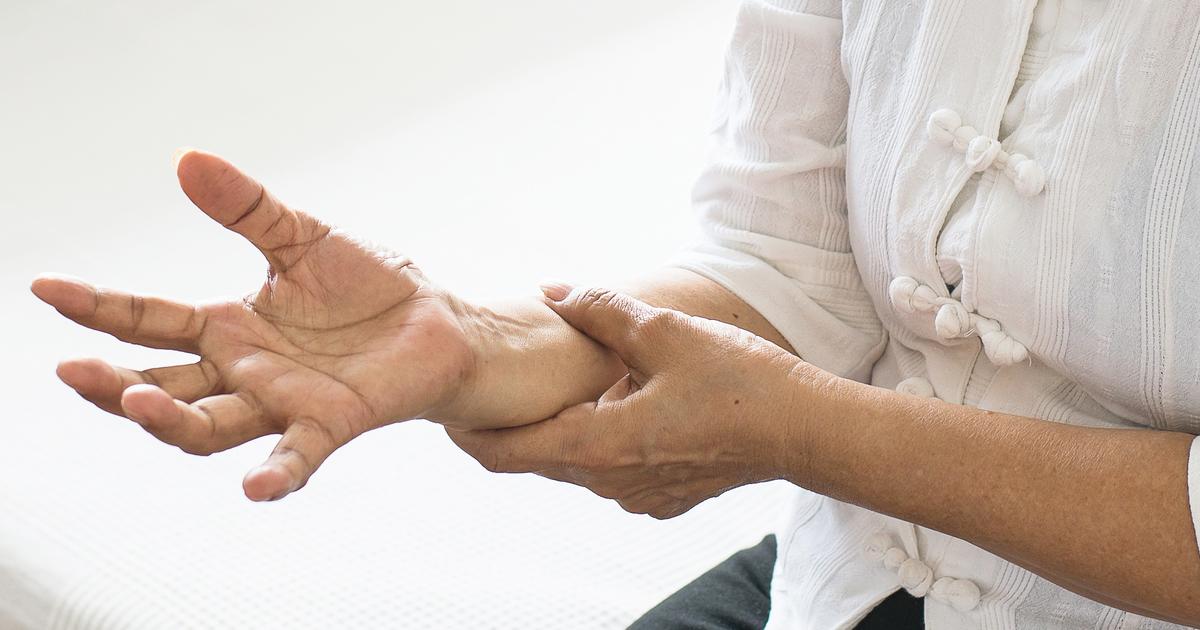What Are The Causes And Complications Of Essential Tremor?
Essential tremor is a movement disorder where a patient experiences involuntary shaking with a rhythmic motion, most often in their hands. Essential tremor is different from a tremor that occurs as a complication of another disorder or trauma to the head. Other neurological symptoms occur alongside essential tremor as they do with a tremor that has other causes. Essential tremor is most prominent when affected individuals are making movements and performing different activities such as drinking, eating, and writing. Essential tremor is prominent when the affected part of the body is extended, and the muscles being used are opposing gravity. Aside from the hands and arms, essential tremor can occur in the trunk, head, face, and neck. Essential tremor can manifest at any age but tends to be most prevalent in older adults.
Essential tremor has several causes and may produce a variety of complications. Get the details on these now.
Genetic Mutation

Half of all essential tremor patients have a genetic mutation that has caused them to develop it. An individual who is born to a parent affected by essential tremor has a fifty percent chance of inheriting the genetic mutation responsible, though not everyone affected by associated genetic mutations will develop symptoms of essential tremor. The genetic mutations most often associated with essential tremor are those that occur on an individual's LINGO1, ETM1, ETM2, ETM3, FUS, SLC1A2 HS1-BP3, and TLS genes. This mutation is inherited in an autosomal dominant manner in most cases. Usually, there is no correlation between the severity and age of onset of essential tremor that runs within a family. Most individuals affected by a familial form of essential tremor have developed it as a result of their genetic abnormality in combination with other environmental risk factors that have either triggered or activated the abnormal gene in their body.
Read more about what can cause essential tremor now.
Older Age

Older individuals are more likely to develop symptoms of essential tremor, but essential tremor is not a part of the natural aging process. The first symptoms of essential tremor do not manifest in most patients until the fourth or fifth decade of their life. Around four percent of all individuals in their fourth decade of life or older are affected by some form of tremors. The mean age of affected individuals at the time of their first symptoms is between thirty-five and forty-five years old. Most individuals who are going to develop essential tremor will see symptoms of the disorder by sixty-five years old and most definitely by seventy years old. There is a negative correlation between the severity and frequency of essential tremor as it progresses over time. The severity of essential tremor tends to become worse as patients age, while the frequency of their tremor episodes tends to decrease as they age. It is rare for essential tremor to be seen in children, newborns, and infants.
Uncover details on the complications linked to essential tremor now.
Issues With Eating

Issues with eating arise when a patient's essential tremor becomes severe enough to interfere with their ability to hold and use eating utensils to bring food from the dish to their mouth. This type of difficulty occurs most often in patients who have an essential tremor that mainly affects the muscles in their arms and hands. As it gets harder control movements enough to use utensils to eat, a patient's diet may change if they do not have anyone with them regularly that can help them with eating. These diet changes include a general reduction in the frequency of meals and a general reduction in the amount of food being consumed. Foods that do not require the use of utensils to eat are often not as healthy and nutritious as foods that do require utensils. Additionally, an individual may refuse to eat in social settings if they are embarrassed about their essential tremor. They may then have issues maintaining an appropriate caloric intake and deal with weight loss.
Learn more about the complications of essential tremor now.
Issues With Holding Objects

Issues with holding objects are common among patients who have essential tremor in the muscles of their hands or arms. Episodes of periodic uncontrollable shaking occur in the hands and are most prevalent when the individual is trying to hold something or use their muscles to perform a task. Attempting to produce a targeted movement with the hands when holding an object can trigger an individual's essential tremor symptoms. As this complication becomes more severe over time, it can interfere with the patient's ability to perform daily tasks and take basic care of themselves. The patient may begin to neglect their dental health because brushing their teeth and flossing become too difficult to carry out. An individual may choose to wear clothing that does not have any type of button or fastening mechanism because securing these components becomes too hard. Caloric intake may begin to suffer because holding and using utensils becomes challenging. An affected individual may also avoid tasks that involve handwriting as it becomes more challenging to hold and manipulate a pen or pencil.
Read more about the complications associated with essential tremor now.
Speech Problems

Essential tremor patients may develop speech problems as they grow older and the tremor progresses over time. The exact mechanism that causes speech problems in essential tremor is not clear, but it is thought to be closely associated with the development of tremors in the voice box. The larynx, also called the voice box, is a component of the respiratory tract that encompasses the vocal cords and is located in between the trachea and pharynx. The vocal cords are the two bands of muscle that form a V shape in the voice box and are the structures responsible for the production of sound. When an individual speaks, their vocal cords move closer together and tighten. When they are not speaking, their vocal cords relax and move further apart. An essential tremor patient may exhibit a quivering sound in their voice when they speak as a result of involuntary rhythmic muscle movements that affect the vocal cords. The volume and or pitch of an affected individual's voice may change, and they may experience interruptions in vocal sound production with tremors in their vocal cords. In rare cases, a tremor in the muscles of the abdomen, chest, or mouth may be responsible for speech problems that occur with essential tremor.